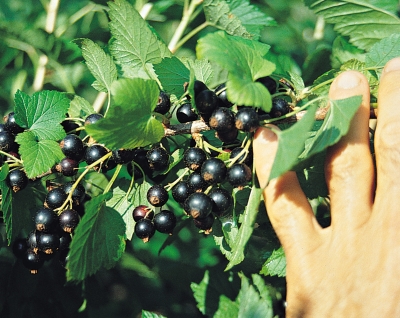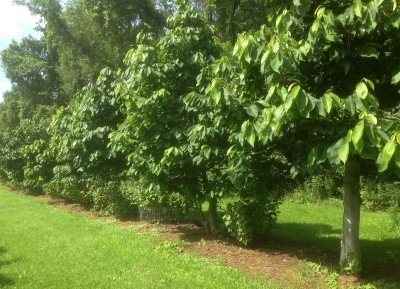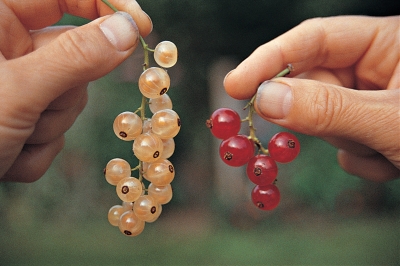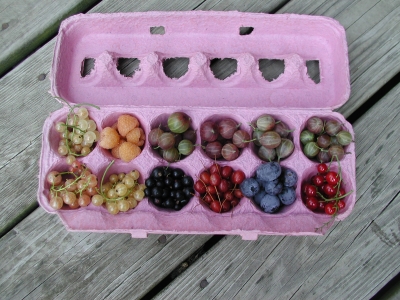IT’S ALL ABOUT THE WEATHER
Snow!!
The talk of the town these days is the weather. In this town, at least, and other towns throughout the Northeast. After a relatively snowless winter punctuated with warm spells, spring knocked early at winter’s door and was let in. Even I, who try to be guided by the calendar rather than my gut, succumbed, planting peas a full two weeks earlier than my usual date of April 1st. Flowering trees and bushes — and more importantly, those whose flowers later morph into luscious fruits — similarly fell prey to spring weather’s apparent arrival.
As I write, snowflakes tumble down from a gray sky, adding to the three inches of snow already piled onto spring green grass. Temperatures tonight and tomorrow night are predicted to drop near 20 degrees F. We’ve all been duped!!
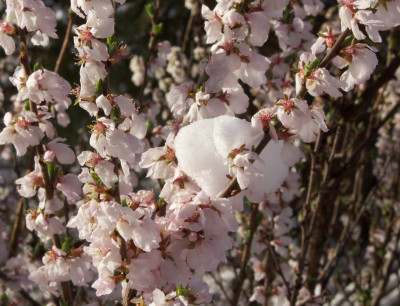
Nanking cherry flowers with snow
I’m most concerned, and least able to do anything about, weather’s effect on my fruit trees and bushes. Nanking cherries were in full bloom a few days ago, a full two weeks earlier than average. Asian pear flower buds look about to pop open, blueberry buds have fattened in preparation for opening , and black currants and gooseberries have almost fully leafed out.
Options available to commercial orchards are not feasible in backyards. Such as sprinkling plants with water so that the heat of fusion released as water freezes keeps buds warm; you can’t stop sprinkling until weather warms enough to melt all ice. On clear, cold nights, heavier, cold air sinks but can be warmed by mixing in warm air from higher up. Not many backyard gardeners have wind machines or are willing to have a helicopter hover overhead all night pushing down warmer air.
What we backyard growers can do that orchardists cannot, feasibly, is to snug a few small plants — bushes and dwarf trees — beneath a blanket. (Except that I have a lot more than a few small fruit plants.) That’s about it. Besides keeping fingers crossed and hoping for the best.
Winter Cold!!
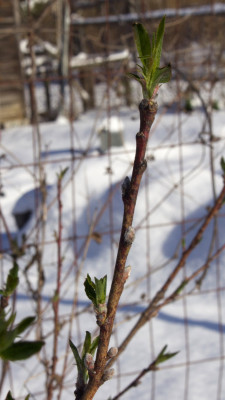
Peach flower buds, dead
Peaches are famous for their early blossoming, so I was especially worried for them. My peach tree spent its first few years in a large pot which could be conveniently lugged into the garage whenever cold weather threatened its blossoms.
No need to worry this year. I checked the fat, flower buds, and they are already dead. Winter’s cold and/or fluctuating temperatures evidently had already done them in.
(Too) Early Peas
My early planted peas took advantage of the last couple of weeks of balmy weather and sprouted quickly. Temperatures near 20° will surely freeze those sprouts. They might resprout from protected buds below ground, or not.
I nudged ol’ man winter aside and created a warmer microclimate over the sprouts by putting up metal hoops covered with row covers over them. They may have been better off with the blanket of snow tucked all around them. Then again, the snow cover might settle too much, or blow away.
In a few days, I’ll see how the peas fared. Worst case scenario: replant.
Not Climate Change
“Climate change” is the battle cry for this whacky weather. But is it really so whacky?
As far as the cold, the average date for the last killing frost of spring in my garden is around the third week in May. The key word here is “average.” Looking at a tabulation of percent chance of cold temperatures on various spring dates (davesgarden.com), on average there’s a 50% chance of the thermometer hitting 24° on April 14th around here, a 10% chance on April 27th.
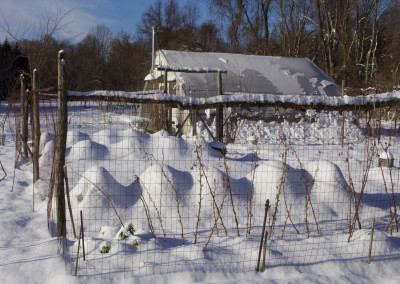
Peas under tunnels & snow
“Frost” means 32°F. For that magic 32°, which is lethal to tomato and pepper seedlings but of no consequence to cabbage and onion transplants, there’s a 50% chance of that temperature on May 13th, even a 10% chance on May 27th.
Of course, temperatures in my (or your) garden could be a few degrees different from those at nearby weather stations, which supply those averages. Still, looking back at my own records, while last year Nanking cherries blossomed here on May 2nd in 1999, they blossomed on April 18th in 2004, on April 26th in 2012, and on March 29th in 2015.
So it seems like whacky weather is the norm. Except this year, it does still seem that the early warming was slightly earlier, and the later cold — 15°F, now, the day after the snowfall — more intense. Then again, Nanking cherries have never failed me.

